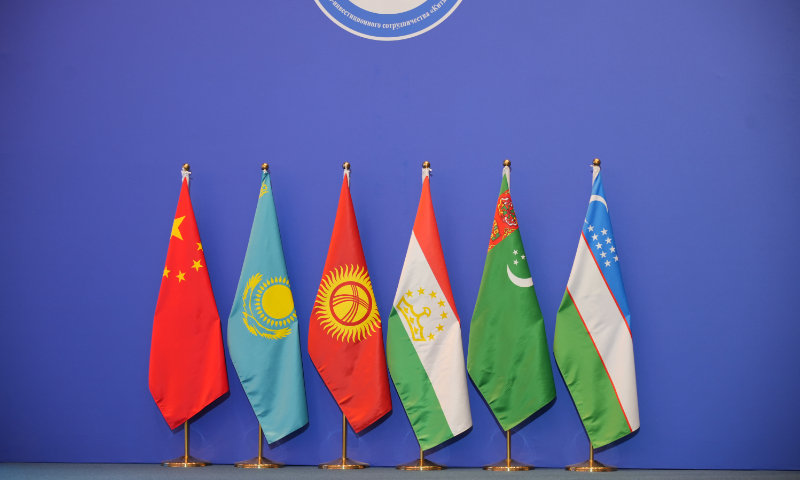The two-day inaugural summit between China and Central Asia will be presided over by President Xi Jinping, the Chinese foreign ministry announced.

Photo credit: Global Times.
Xi’s counterparts from the five Central Asian nations of Kazakhstan, Tajikistan, Uzbekistan, Kyrgyz Republic and Turkmenistan would be in attendance at the summit in Xian, in northwest China.
The much anticipated summit is viewed as a mission to strengthen strategic collaboration with Central Asia on a variety of subjects. According to Chinese State Councilor and Foreign Minister Qin Gang who chaired the recent 4th China-Central Asia Foreign Ministers’ Meeting in April, “China-Central Asia relations and regional development have shown unprecedented vitality.”

Anna Ge.
The foreign ministers of the five Central Asian countries stressed that developing relations with China is a priority of their respective diplomatic agendas and that they will maintain high-level exchanges with China, promote Belt and Road cooperation, deepen people-to-people exchanges, fight terrorism, separatism and extremism and usher in the next 30 golden years of China-Central Asia relations.
Then, what exactly does the “good neighbors, friends, partners, and brothers” relationship mean? Here are a few fact-checks on the main characters of China-Central Asia relations over the past three decades.
High-level mutual trust. Border issues are notoriously difficult to resolve. After establishing diplomatic ties, China, Kazakhstan, the Kyrgyz Republic and Tajikistan effectively settled long-standing boundary concerns through constructive and cordial negotiations. The shared borders have become a symbol of friendship and collaboration, serving as a model for the international community in the peaceful resolution of territorial disputes.
In the past 30 years, this success has laid the groundwork for mutual support and respect, with China and Central Asian countries backing each other’s key interests and development routes. Mutual trust and reliance have led to the formation of a comprehensive strategic partnership among the parties. As China and Central Asia stand at a new starting point, the relationship promises to continue to flourish.
Booming economic cooperation. Based on the statistics from China’s Ministry of Commerce, in the first two months of 2023, trade between China and the five Central Asian countries surged by 22 percent compared to a year ago. Trade between China and the five countries hit a historic high of $70.2 billion in 2022. Within this period, China expanded its imports of agricultural, energy, and mineral items from these countries by more than half. China’s direct investment in Central Asia had reached $15 billion by the end of last year.
The China-Europe Railway Express is a prime example. The freight route has evolved into a key commerce corridor between Europe and China via Central Asia, as well as an artery of BRI collaboration. By 2022, 65,000 voyages had been completed, with over 6 million TEUs of commodities worth $300 billion moved over this route. The Railway Express has removed bottlenecks in cross-border trade and unlocked the potential for economic growth in the region that no one had foreseen.
Always aiming at maintaining peace and stability in the region. Cooperation on law enforcement and security, jointly fought against terrorism, separatism, and extremism, and cracked down on cross-border drug trafficking and transnational organized crimes have been both swift and fruitful. As a region with a long history of peace and stability, China and the Central Asian countries all firmly oppose any outsider meddling in internal affairs, including attempts to incite “color revolutions” in the region.
Look no farther than the coordinated position and efforts of China and Central Asian countries in backing the development of an open and inclusive government in Afghanistan for an example of how cooperative efforts on sustaining security may have a significant beneficial influence in the region. Although there is still a long way to go until these objectives are achieved in Afghanistan, the future appears bright with coordinated efforts.
Partners with shared values in multilateral affairs. China and Central Asian countries have worked closely together under various multilateral platforms and have jointly defended multilateralism and opposed interference in each other’s internal affairs. Be it in the United Nations, Shanghai Cooperation Organization, or the Conference on Interaction and Confidence-Building Measures in Asia, China and Central Asian countries always share a similar stance on upholding multilateralism and stand together to preserve world peace and stability. Through their participation in these mechanisms, China and the five Central Asian countries are also working to steer the international order toward greater justice and equity.
Lasting friendships. The people-to-people bond has always been the backbone of long-term relations and lasting friendships between China and Central Asian countries. Throughout history, people from both sides have been closely linked by the ancient Silk Road. In today’s world, the interchange is much more profound. China and Central Asia have established 58 pairs of sister cities, 13 Confucius Institutes, and 22 Confucius Classrooms. Many Chinese universities also established research centers focusing on Central Asian countries and languages.
According to the current plan, the number of friendship cities between China and the five Central Asian countries will increase to 100 pairs in the next five to 10 years. Within the next five years, China will grant 1,200 government scholarships to Central Asian countries. The China-Central Asian Youth Art Festival and Bridge to the Future China-Central Asia Young Leaders Training and Exchange Camp will also be formed.
In the region, for the region. In contrast to certain external forces from outside the area, which is used to conduct regime change and color revolutions for their own gain. As close neighbors, China and Central Asia are on the same boat in realizing peace and prosperity for our peoples. It is in our common interest to continue the cooperation on the basis of mutual respect, good-neighborly friendship, solidarity in trying times, and mutual benefit. And I am confident that the golden era of China-Central Asia relations is yet to come.
The author is Anna Ge, the host of CGTN, China Media Group.


